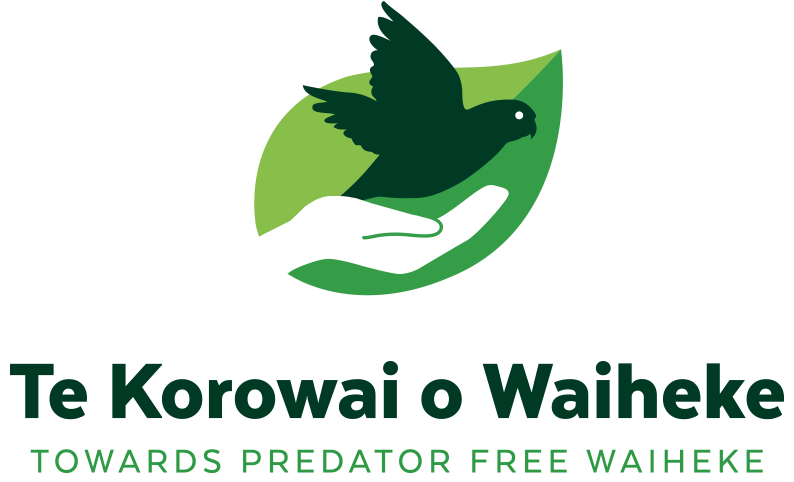The curious blue face of a kororā — Written by Te Korowai o Waiheke Team Member
We are shrouded by the night sky, a blanket of stars and satellites. The air is crisp and thick with salt, loose pebbles crunching underfoot as we make our way around the coastline. Over the sound of our slipping feet, I hear a rustle from the bushes beside me, the pampas grass seems alive and wiggling.
I can only assume there is a nest of rats getting restless, but the noise gets louder and louder. I turn my headlamp to investigate as a low murmur creaks from inside one of the bushes. That doesn’t sound like rats to me. We hurry a bit further down the beach and we switch our headlamps off, the water breathes blue with bioluminescence as we sit quietly on the shore. Soon the rustling climbs tentatively from its burrow and plops with a crash onto the pebbles, when I turn my torch back on we are greeted by the curious blue face of a kororā. Where the light catches his flippers, he is the same bright turquoise as the glowing tide. There is no hanging around for this guy, he disappears back into the bushes to find a better way into his burrow. We’re all grinning in silent delight, our kororā are indeed a treat to witness.
On a glassy day in Tīkapa Moana, little blue penguins can be seen floating in rafts on the rolling open ocean on the hunt for a meal or clambering home over the rocks at dusk. They nest in burrows along rocky coastlines but have been known to travel over a kilometre inland to find a place to live. Many bach owners know well when a blue penguin has moved in, the smell of fish and all-night screeching from underneath the house is a wonderful sign that your new neighbours are of the feathered kind. Like most penguins, their incredible homing instincts mean that their chicks will always return to the burrow they are born in, regardless of where they might end up. Leaving early in the morning for a day of hunting, kororā will dive up to 50m to hunt for squid and sprats before returning home to their burrows in the evening. Hopefully with a belly full of fish for the whānau.
— Written by Te Korowai o Waiheke Monitoring Lead, Charlie Thomas
Little blue penguin/kororā by Peter Rees Photography

